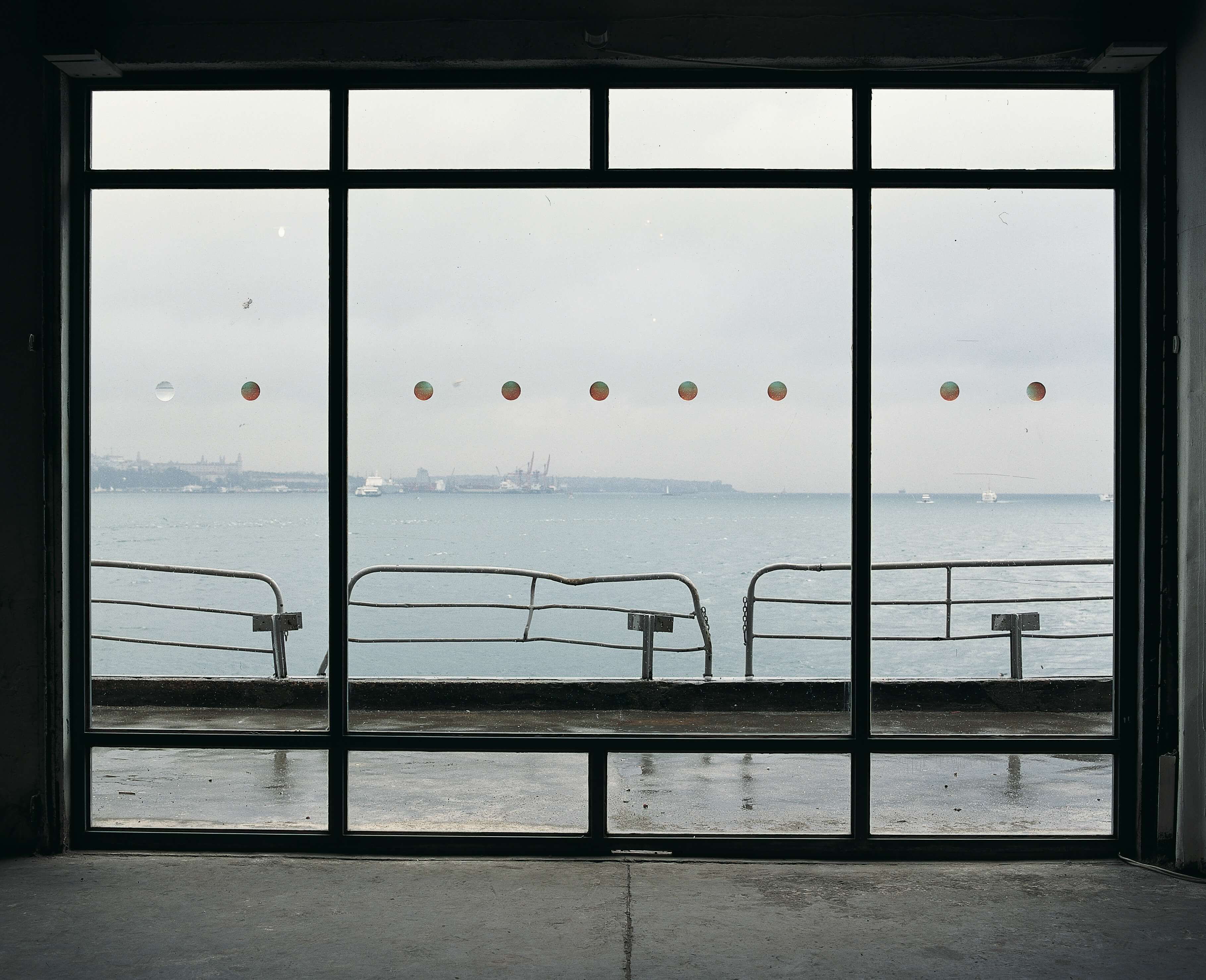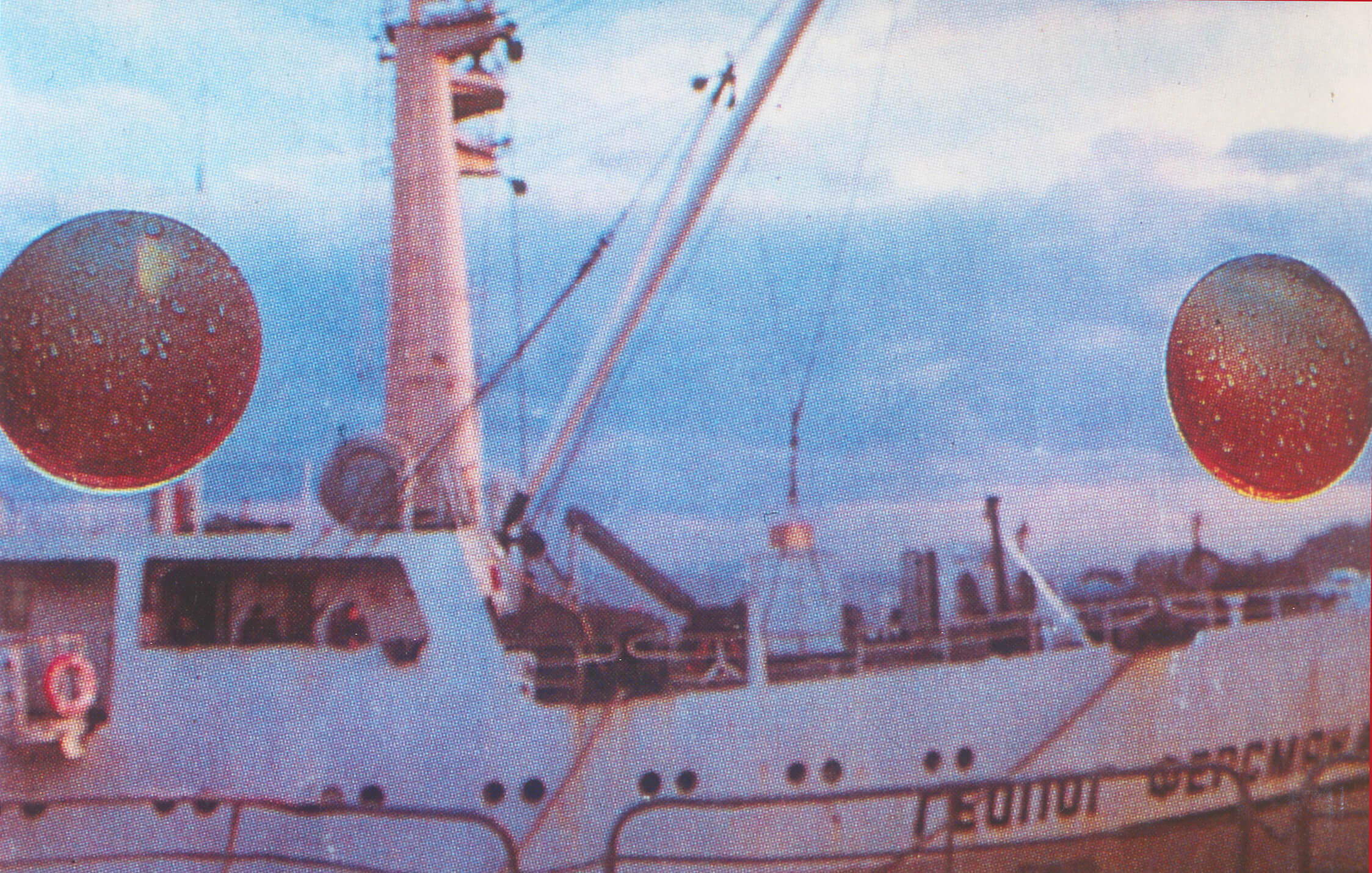2015, Installation
9 lenses , 9 diapositives
voice over: reading of 1001 Nights
Developed for IV. International Istanbul Biennial, “Orient/ation: The Vision of Art in a Paradoxical World”, Antrepo, Istanbul
| / |
The conceptual framework of the biennial entitled “Orient/ation: The Vision of Art in a Paradoxical world” presented the opportunity to devise new interpretations of this juxtaposition by posing the question what the global political uncertainty instigated following the dissolution of the state socialism could bring and implied that the “East” would play a role in shaping the future with the pun on “orient”ation. Esra Ersen would present her work in the Antrepo building on the Tophane shoreline which was designated as the main biennial space. Upon the artist’s request one of the wide doors facing the port was dismantled to be replaced by a large piece of glass to function like a window. The work consisted of a sound mechanism that was activated when one approached the glass and nine convex lenses with slides underneath lined up horizontally at eye level.
The main motif defining the content of the work was the similarities between the two activities taking place simultaneously during the course of the biennial. Within the Antrepo space, there was the frantic hustle and bustle of dozens of artists, assistants, technicians and administrators working to transcend geographical and cultural difference to deliver an art exhibit fully and flawlessly in a timely manner. From the point where Ersen situated her work, it was possible to look outside and observe a similar commotion in the port: foreign ensign ships from distant ports were docking by the building; the crew was unloading the ship’s cargo with dockworkers they did not know; with whom they did not share any cultural communality, yet felt on equal standing and approached with the solidarity of undertaking a joint effort. This meeting of the artists with one another, the crew and dockworkers, as well as these two very different worlds, also constituted the title of Ersen’s work: “Encounter”. This state of leveling was reemphasized by the lenses lined up on the glass pane. The drops of sweat on the slides Ersen placed at the base of the lenses momentarily drew the viewer’s attention away from the poetic Bosphorus seascape towards a social reality often ignored; labor at work.
There was another visual effect the lenses created. Due to their convexity they reversed the shapes away from the focal point. Thus on the lens surfaces the Üsküdar shores (the Asia continent) appeared upside down as one looked through the lenses facing the Bosphorus. This optical reversal involving deformation also entailed a connotation of the reversal of prejudices pertaining to those positioned as the other geographically due to real life experiences. The Istanbul dockworker was seeing the foreigners he customarily perceived as tourists sweating in a struggle similar to his own. And the ship crew encountered an Istanbul way beyond the city defined by the expectations of an exotic gaze.
A similar reversal was also at work challenging the exotic expectations that could have crept into the minds of the artists coming to the biennial, and the art professionals designing the exhibition and even perhaps the conceptual framework of the biennial, and their reveries of finding a transcendence in this geography defined as the other, a source to restore (or sink) the world.
And precisely at this point, the second factor constituting “Encounter” came into play: a recording projected towards the glass from small speakers.
A woman’s voice whispering excerpts from One Thousand and One Nights was conceived as an ironic element reminding that these encounters across geographies did not take place carefree. We know that in the West, the desire, interest and thirst for knowledge regarding the Orient in the scope of Orientalism—the rise of which coincides with the increasing popularity of One Thousand and One Nights—developed in parallel to the vision of dominating the East. Therefore, it could be argued that Ersen, who established the interaction and propinquity of actors of equal status in the context of the exhibition as the main axis of her work, issued a warning against the new hierarchies and exoticizing practices in the process of inter-geographical dialogue; a sarcastic innuendo pertaining to the conceptual framework of the biennial with the sound installation she included in her work.
Erden Kosova, Face to Face, Yapı Kredi Publications, Istanbul, 2011, page:23–26

